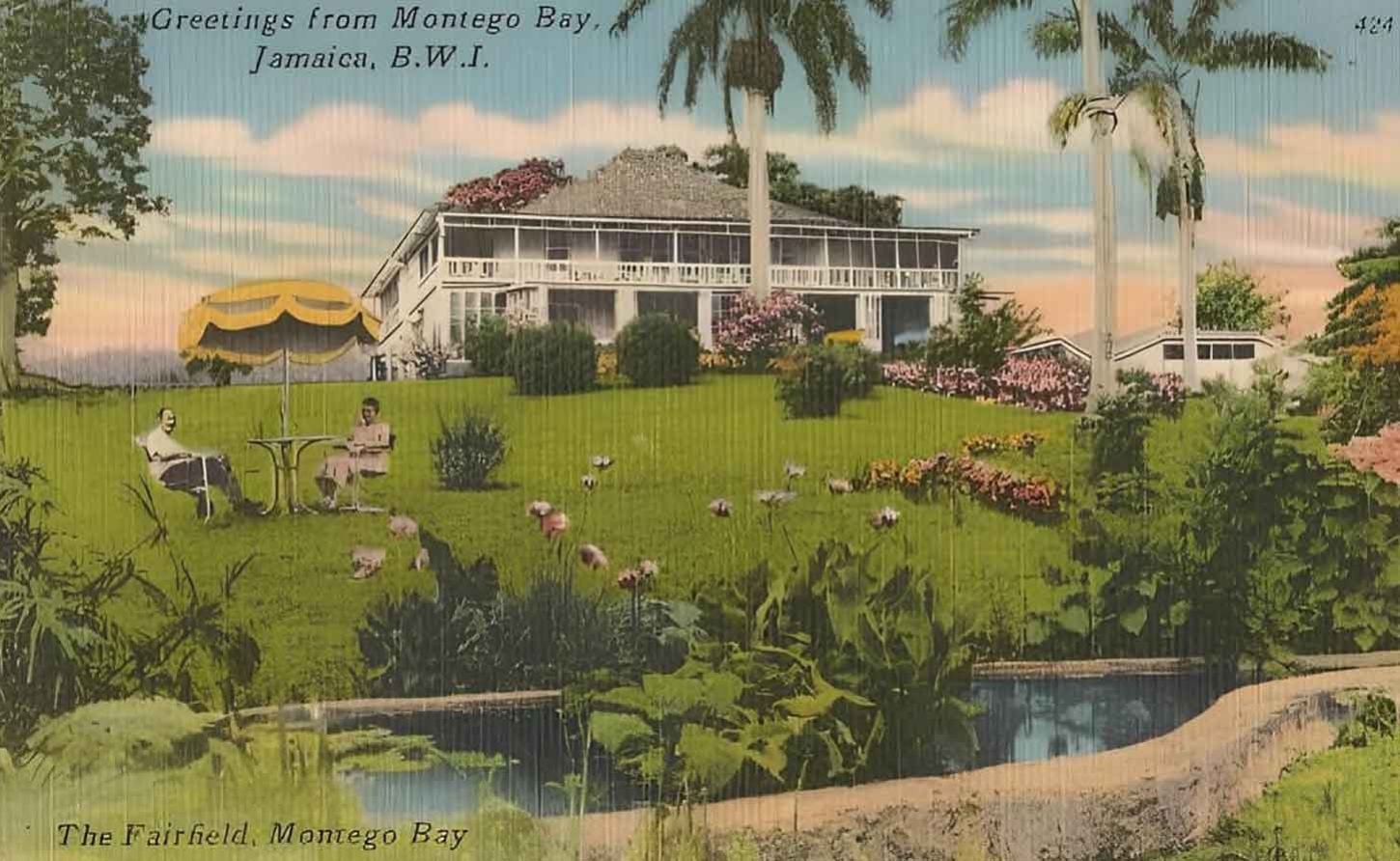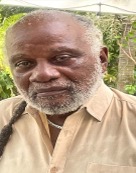JAMAICA | Fairfield Golf and Country Club: Where Civilizations Collide and the Caribbean Dream Was Scripted

MONTEGO BAY, Jamaica, June 29, 2025 - Each civilization builds upon the ruins of the last. Nowhere in Jamaica is this more vivid than at Fairfield, the storied grounds west of Montego Bay.
What is remembered today as the Fairfield Golf and Country Club was once the largest known Taino village site in Jamaica—a place of vibrant Indigenous life, spiritual practice, and community long before the march of empire.

Renamed Fairfield, it became both a symbol of plantation-era opulence and later, a nucleus of Caribbean sports and high society.
Montego Bay: Jamaica's Flamboyant Stage for the Elite
No discussion of Montego Bay can be complete without reference to its flamboyant historical past, replete with British and European actors who established the town as a getaway for the rich and famous.
From the 18th century onward, Montego Bay evolved into Jamaica's premier destination for colonial grandeur and international leisure. Its natural harbor welcomed merchant vessels laden with sugar wealth, while its hills and coastal stretches became dotted with great houses, exclusive estates, and elite social institutions.
The town's transformation from a working port into a tropical paradise for the privileged classes drew an extraordinary cast of characters: British aristocrats fleeing dreary winters, European nobility displaced by revolution and war, American industrialists seeking exotic refuge, and a constellation of writers, artists, and socialites who found inspiration in its dramatic landscape.
This was where empire's beneficiaries came to play, to conspire, and to reinvent themselves against a backdrop of unparalleled natural beauty.
Among the most distinguished communities to emerge from this milieu was the Fairfield Golf and Country Club—a social and sporting enclave for Jamaica's colonial aristocracy that would come to embody everything Montego Bay represented: exclusivity, elegance, and the seamless blending of imperial privilege with Caribbean allure.
Origins in Empire and Sugar Wealth
In the 18th and 19th centuries, the land on which Fairfield sits was part of a sprawling sugar estate system at the heart of Jamaica's brutal plantation economy. The wealth extracted from enslaved African labor financed the construction of "great houses" and exclusive social clubs—architectures of dominance and privilege that became Montego Bay's defining features.
As sugar fortunes declined in the early 20th century, members of the colonial elite pivoted from agricultural extraction to recreational indulgence, mirroring leisure-class trends in Britain and the United States while capitalizing on Montego Bay's growing reputation as the Caribbean's most sophisticated destination. Out of this transformation, the Fairfield Golf and Country Club was born.
The Fairfield Club is Born: 1930s Colonial Prestige
Established in the 1930s, the Fairfield Golf and Country Club became the crown jewel of Montego Bay's social and sporting landscape. With its nine-hole golf course, tennis courts, and stately clubhouse, it was a winter refuge for the well-connected, perfectly positioned to take advantage of the town's established networks of wealth and influence.
Among its most notable members was Lord Beaverbrook, a powerful British press baron and political insider, who kept a cottage on the property and entertained visiting royalty and foreign dignitaries. The club also became a haven for Russian aristocrats displaced by the Bolshevik Revolution, including an exiled prince and princess who found solace—and status—within its tranquil hills.
Here, in the tropical stillness of Fairfield, imperial nostalgia mingled with Caribbean elegance, creating a microcosm of Montego Bay's broader appeal to the displaced elite of a changing world.
Caribbean Tennis Championships: Prestige and Competition
By the mid-20th century, Fairfield had become a premier venue for elite competition, hosting the Caribbean Tennis Championships. Players and spectators from across the West Indies and further afield converged on Montego Bay, with matches played on courts flanked by lush vistas and colonial verandahs.
The Championships elevated both Fairfield and Montego Bay to regional prominence, securing their place in the golden era of Caribbean sport. The tennis tradition was considered among the most prestigious in the hemisphere, drawing international attention to Jamaica's burgeoning reputation as a destination where sport, society, and tropical luxury intersected.
Inspiration for Round Hill: Where John Pringle Dreamed
It was within this rarefied space—and against the backdrop of Montego Bay's established culture of elite hospitality—that Jamaican-born John Pringle, visionary, bon vivant, and son of privilege, found the inspiration to create Round Hill Hotel and Villas.
Opened in the early 1950s, Round Hill would channel both Fairfield's fusion of British refinement and tropical charm, and Montego Bay's proven formula for attracting international celebrities, into a new kind of luxury: Jamaican in setting, global in appeal, and intimate in design.
Round Hill would go on to attract the likes of Grace Kelly, Paul McCartney, and Jackie Kennedy, cementing Montego Bay's status as the Caribbean's most glamorous destination.
But the seed of the idea—the blending of class exclusivity with Caribbean ease—was planted at Fairfield and nurtured by the town's decades-long tradition of catering to the world's elite.
A Space of Racial and Social Boundaries
Yet behind the elegance lay exclusion. Fairfield, like much of elite Montego Bay society, was a symbol of Jamaica's colonial social order—reserved for the white, near-white, expatriate, or elite visitor. Membership was governed by race and class; belonging was tightly policed.
But change was coming. As independence dawned, and as barriers began to erode throughout Montego Bay, Fairfield became a site where Black Jamaican excellence emerged and redefined the space. Young men from nearby Granville—once employed as caddies, groundskeepers, or ball boys—became athletes in their own right.
Zebede Hackett, Basil Campbell, and others broke through the color lines and made Fairfield a proving ground not just for privilege, but for talent, ambition, and grassroots potential.
Layers of Legacy: Fairfield Today
Though its golden age has faded, Fairfield remains etched in Jamaica's cultural memory as a defining chapter in Montego Bay's storied history. The land still bears the imprint of its ancient Taino inhabitants, the echoes of Beaverbrook's soirées, the crack of championship tennis volleys, and the genesis of Caribbean luxury tourism.
Fairfield also holds political significance in the shaping of modern Caribbean identity. In the 1950s, during the tumultuous era of decolonization, Fairfield served as a discreet meeting site for key figures involved in the formation of the West Indies Federation.
Against the serene backdrop of the hills west of Montego Bay, leaders and intellectuals gathered to debate the future of Caribbean unity—seeking to craft a regional federation that might stand as a counterpoint to colonial dependence and economic fragmentation.
These private gatherings, often hosted by influential members of the Jamaican plantocracy and visiting British officials, created a space where visions of post-colonial governance, trade cooperation, and regional integration were intensely negotiated.
Though the Federation would ultimately dissolve by 1962, the discussions held at Fairfield were emblematic of a moment when the Caribbean dared to dream of political union.
Fairfield is not merely a golf course—it is a palimpsest of Montego Bay's extraordinary journey from colonial outpost to international playground. A living site where Indigenous civilization, colonial grandeur, Cold War exiles, Black sporting excellence, and Caribbean nation-building all converge.
Here, every layer tells a story. And every story reminds us that the Caribbean dream was not born in a vacuum, but built—layer by layer—on contested ground, in a town that has always known how to make the powerful feel at home.
Suggested Avenues for Further Research or Exhibition
- Archaeological Inquiry: A systematic documentation and preservation effort of Fairfield's pre-Columbian past, focusing on its Taino artifacts and sacred geography.
- Colonial Leisure Archives: Mapping club records, estate correspondence, and personal diaries from the 1930s–1960s to uncover hidden histories of Montego Bay's elite networks.
- Oral Histories: Interviews with former staff, caddies, players, and Granville elders to preserve local memory and document the social transformation of the area.
- Sports Heritage Revival: Positioning Fairfield within Jamaica's broader sporting heritage—especially golf and tennis—as part of a national legacy rooted in Montego Bay's international prominence.
O. Dave Allen is a Writer | Strategist | Pan-Africanist
WiredJa Online | The Gleaner | Jamaica LinkedIn
For comments please contact O. Dave Allen at:
-30-

 En
En  Ar
Ar